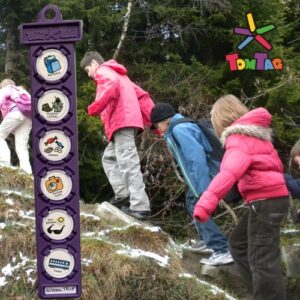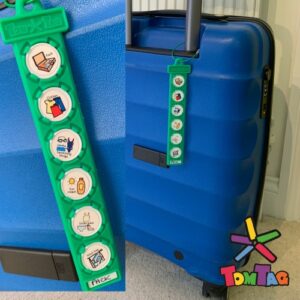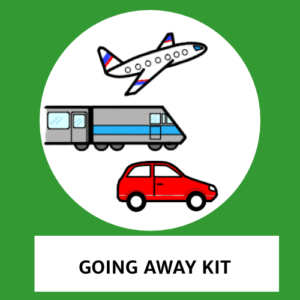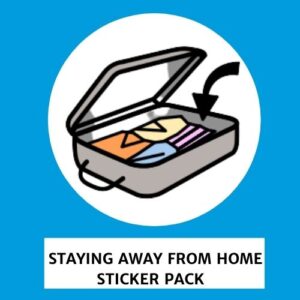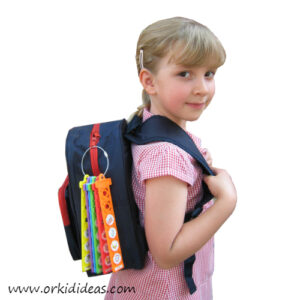
Christmas can be a magical and exciting time but for many autistic children like my son Tom, the festive period is anything but wonderful.
Tom struggles with changes to his routine, worries about not understanding what is happening and why his usual activities and food are different. When he was younger, if visitors came to the house or we visited family and friends he’d become confused and unsettled as he didn’t know what was expected of him. He was often tearful, frustrated, and distressed.
We tried lots of things and now we know what to do to help Tom and our family have a more enjoyable and relaxing Christmas. As he turned 21 this year, Tom shares 21 of his favourite tips to help you and your family prepare for an autism-friendly Christmas.
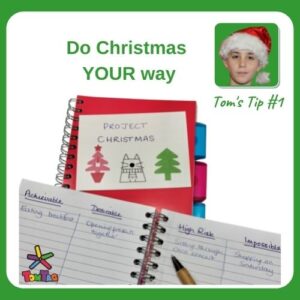
#1: Decide what’s the best way to ‘do’ Christmas for YOU and YOUR family.
Making a plan in the following way helped us:
✍🏻Grab a notebook and pen and have a think about the whole upcoming Christmas period.
📝Make a list with four columns headed Achievable, Desirable, High Risk, Impossible
🤔Think about what is planned or expected over Christmas and place each activity under one of the four columns
👏🏻Don’t aim for 💯%- if you can manage most of the achievable, one or two things in the desirable column and come through everything in the risky column you should rightly feel proud.
Don’t give up hope if nothing goes to plan. In our experience, over time many of our risky column activities became achievable.

#2: Make a personalised visual ‘All about Christmas ‘guide.
Showing all the different things you might do at this time of the year this guide could include Christmas objects, Christmas food and activities that only happen at Christmas e.g., meeting Father Christmas or pulling Christmas crackers
You could make one together like mum and I did with drawings. A photo collage, Christmas scrapbook, or pictures of your family celebrating Christmas also work well.
Like many children with autism, I tend to forget social information, so a permanent visual guide was a great way to remind me what Christmas looks like.

#3: Take time to talk with your child about things that may be worrying them
I was worried about not having my usual breakfast – jammy toast and hot chocolate on Christmas day.
This might seem a little thing to worry about, but it was a huge feeling for me. Mum explained to me that I would have my usual breakfast and that made me feel better.

#4: Make realistic plans for shopping.
Mum tried to avoid taking me shopping during Christmas. The noisy crowds, strong smells, and bright lights in the shops made me feel confused and worried. If she couldn’t find a babysitter, we used to go at quieter times of the day with plenty of snacks to distract me!
Online shopping now makes things much easier
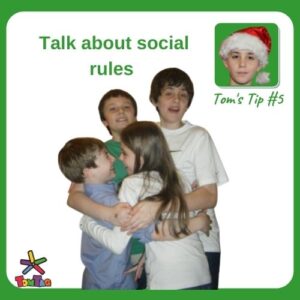
#5: Talk about social rules and different expectations that people might have around Christmastime.
When I was younger, having visitors to my house or going to visit family and friends over Christmas made me feel worried. I didn’t like being out of routine and felt anxious about what I should say and do. Practicing what to say when meeting people and having pictures to remind me what would happen and how I should behave, for example saying hello, please, and thank you really helped.
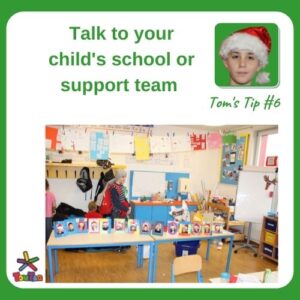
#6: Talk to your child’s teacher so you know what different things they might be doing and when.
Mum used to have a meeting with my teacher and support assistant to find out what activities were going to be happening and how best to help me.
By letting us know when there would be changes to my routine, for example, doing Christmas crafts instead of my usual lessons or practicing for the carol service I could prepare myself for the changes and didn’t get as anxious.
Planning for the Christmas party so that I could have my favourite drink and a quiet area to go to when things got too much also made me feel much calmer about going to the party.

#7: Make a list of special interest gift ideas that you can suggest to relatives and friends when they ask what presents they can buy.
When I was younger, I didn’t get excited about getting toys as presents. But I loved getting things about what I was interested in, for example, lorries and trains. Activities based on my special interests were also good ideas.
Among my favourite Christmas presents were a pillowcase with trains on, a trip to the railway museum and of course getting lots of Eddie Stobart lorries!
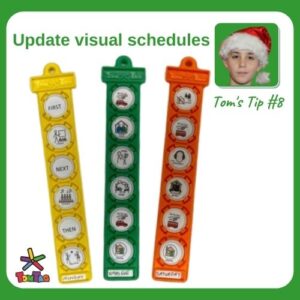
#8: Make sure any visual schedules are updated to show any changes to routine or special Christmas events.
Sudden changes to my usual routine like a last-minute practice, craft activity or even something small like moving to a different classroom or popping to see a friend can upset me and cause me to worry. It’s always better to give me as much warning as possible of any changes so I can prepare and cope with them.
It can be exhausting to keep up with all the different things that are happening. A TomTag visual timetable really helps to show me what is happening and when. It’s perfect for use at home and school.

#9: Involve your child in deciding where the decorations should go.
I get worried when there are unexpected changes in things around me. So, if Christmas decorations suddenly appear at home or school, it can shock me. Involving me in deciding where the decorations go and letting me help decorate the Christmas tree can help me feel less overwhelmed.
It’s also important to let me know when the decorations are being taken down too. It’s less stressful for me when there is a warning and a reason given.
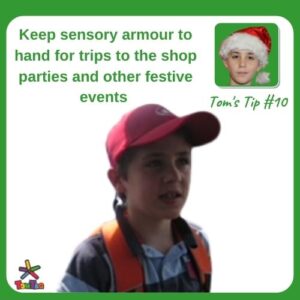
#10: Keep sensory armour to hand for trips to the shop, parties, and other festive events where there might be sensory overload.
Loud music, twinkly lights, everything and everyone looking different can be overwhelming for me.
Sensory armour can help and includes:
🎧Headphone to cut out some of the noise and sound. I can also listen to my favourite music to help reassure me when things get tricky
🧢A cap to help shut out some of the flashing lights
🕶Dark glasses to reduce light intensity.

#11: Let your child wear their Christmas costume or party outfit around the house
When possible, buy or make your child’s Christmas costume or party outfit early.
Let them wear it around the house for say, 5-10 minutes over a few days to help them become comfortable with how it feels.
I don’t like the feel of any clothes made out of wool or anything with a label in it as it feels scratchy on my skin. Fancy dress costumes are also a no-no. I much prefer to wear my own clothes. I don’t mind wearing a Christmas hat– if the label is cut out and I don’t have to wear it for a long time – just long enough for mum to get some photographs is usually ok!

#12: Use an advent calendar or other visual to prepare for and understand the countdown to Christmas.
I used to find traditional advent calendars quite fiddly. When I was younger, we had a large fabric Christmas tree with 24 large, numbered pockets. Each pocket contained chocolate that I could easily reach.
Other ways to make an advent calendar include a Christmas Book Advent Calendar – unwrap a Christmas book each day, little gift boxes filled with knick-knacks, or a treasure hunt with clues.
You can use TomTag to make a fun countdown too!

#13: Prepare your child for how to greet family and friends
Prepare for visitors and visits from family and friends by talking to your child about who they are going to see and how to greet them.
I spent lots of time practicing with mum how to greet people. Being hugged makes me feel uneasy so I learned how to shake hands with friends and family. I do love being hugged by my sister though!
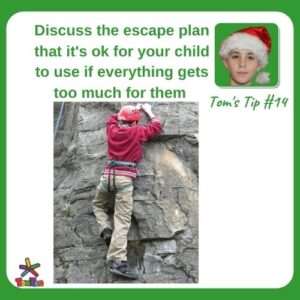
#14: Discuss the escape plans that it’s ok for your child to use if everything gets too much for them.
It was so important for me to know that if things got too much for me there was a quiet space I could go to ‘escape’ Christmas. When I was younger I agreed with mum that I would show a red card when I needed some time out in the quiet space.
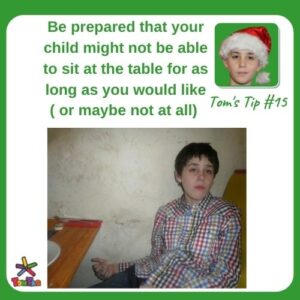
#15: Be prepared that your child might not be able to sit at the table for as long as would like (or maybe not at all).
Be upfront about this with your family and friends if you’re having Christmas dinner at their homes.
I’m happy to sit at the table now for my meal but often need to leave the table when I’ve eaten for a movement break. Knowing that this is OK and that I’m not going to be forced to sit at the table means I don’t get anxious. When I was younger, I had a favourite book or toy to keep me distracted during mealtimes.

#16: For children who won’t eat a traditional Christmas dinner prepare and freeze their meals in advance to reduce the workload on the day.
I used to be a very picky eater. This was because I don’t like changes. I liked things including my food, to be predictable. Having the same foods such as pasta, bread and chips meant I didn’t have to worry about new tastes or feelings in my mouth. I preferred to eat foods that I knew tasted and felt the same. I also avoided eating meat as this was difficult for me to chew.
My favourite Christmas dinner used to be chicken nuggets and chips – Mum always put some peas on my plate, just in case!
As I’ve got older my fussy eating has changed. I now love a traditional Christmas dinner and my favourite vegetable is broccoli!

#17: Playfully and patiently practice Christmas traditions
These could include receiving and unwrapping presents, pulling crackers, and wearing hats so that your child knows what to expect and can join in.
Here are some things that we did to help me understand what happens at Christmas:
Play wrapping games. Mum wrapped up some of my things – clothes, books, toys and I had to open the paper and find what was inside. We’d play a guessing game by trying to guess what was inside by the feel and shape of the parcel. We used to have something square, round and rectangular so I could also practice my shape names. Chocolate was always my favourite thing to unwrap!
Pulling crackers. We bought some cheap crackers and practiced pulling them, so I got used to the ‘bang’ sound and it didn’t come as a surprise. I got used to wearing the paper hat from the cracker and looking for the joke inside them.
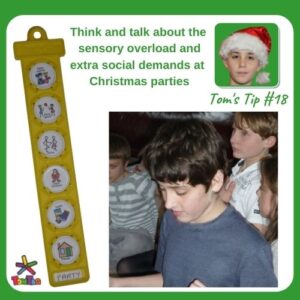
#18: Think and talk about the sensory overload and extra social demands at Christmas parties.
The school Christmas party used to be very overwhelming for me. Loud music, everybody looking different and the expectation that I should be joining in with dancing and games.
These things helped the party be less stressful for me:
📝Using a visual schedule showing me what was going to happen
🤗Having a ‘buddy group of friends to help me join in
🕺🏻Practicing dancing at home!
🤫Making sure there was a quiet place for me to go to if things got too much.

#19: Some children may be overwhelmed by many presents all in one go. Try introducing gifts one at a time over the day or over several days.
Alternatively, adopt an advent style approach and bring out a small gift each day on the run-up to Christmas day.
On Christmas day, I used to stagger my present opening. I opened some presents in the morning and some in the afternoon. Often, we went on holiday at Christmas time so I would open most of my presents after Christmas once we were back home and in my own time. This worked well for me as I didn’t feel stressed about deciding what to unwrap and doing it all at once. I could enjoy opening my presents.

#20: Leave some areas of the house undecorated so there’s always a quiet place for your child to retreat to if they need it.
I liked having a Christmas-free zone to escape to when I got fed up with the flashing lights, glittery things, and loud music around the house. This decoration-free space helped me feel calmer when things got too much.

#21: Many autistic children don’t like surprises so it might help not to wrap presents up.
You could also just tell them what’s inside or use clear cellophane or plain paper for wrapping with a picture attached showing what’s inside.
When I was younger, it didn’t bother me to get a wrapped present, but I didn’t have the ‘surprise feeling’ you usually get before you open it. I didn’t really understand the idea of a surprise, so I had a mixture of wrapped and unwrapped presents.
I used to love anything to do with numbers so receiving a large pack of number cards one Christmas was a lovely surprise!
Tom and I would love to know any tips you have to make Christmas more autism-friendly?
Clare & Tom x
Useful resources:
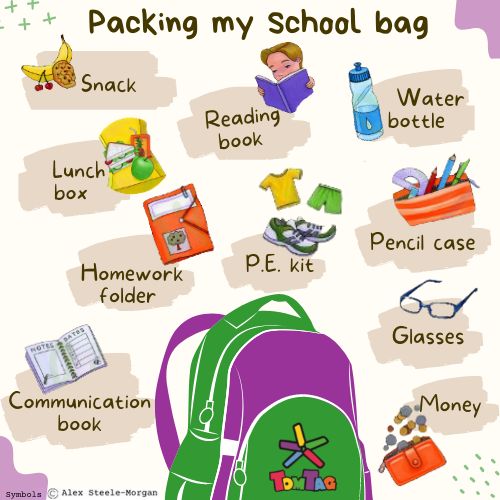

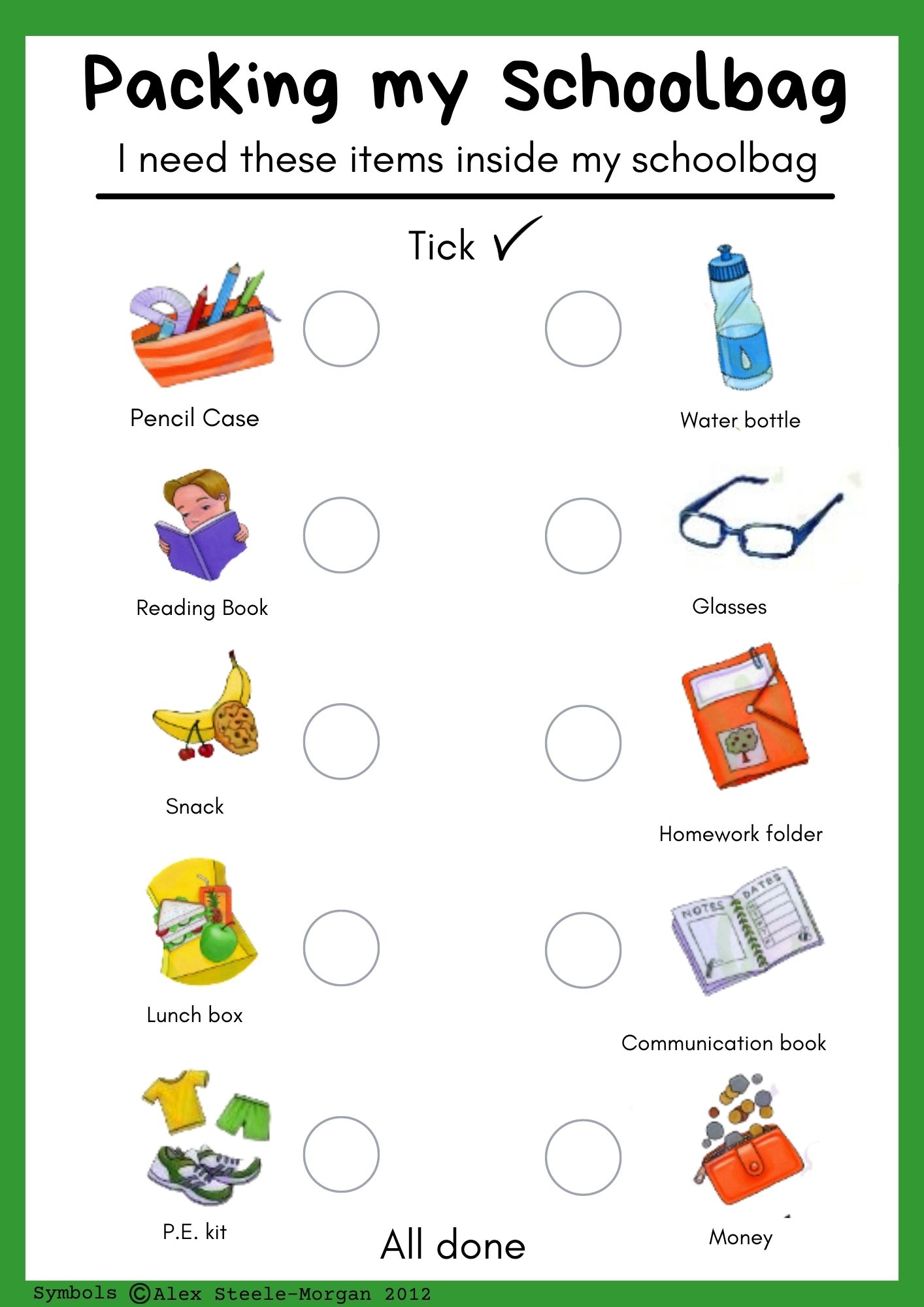
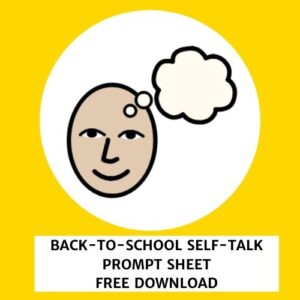

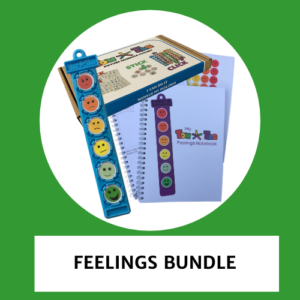
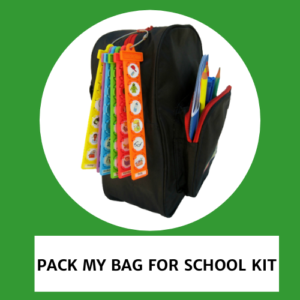

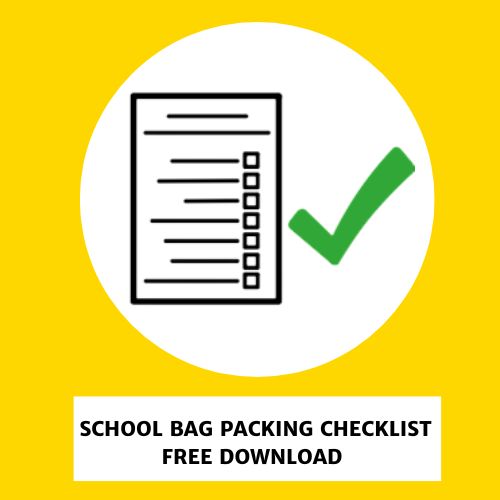
























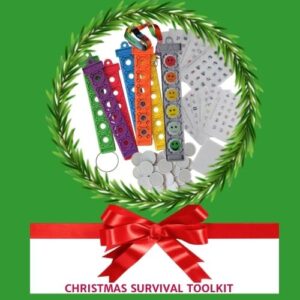





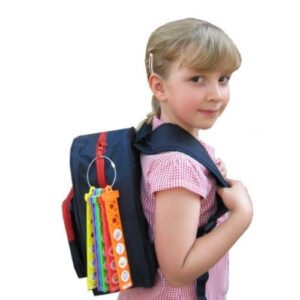
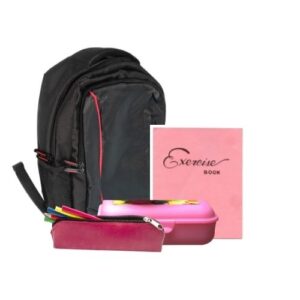
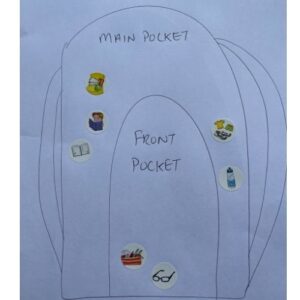
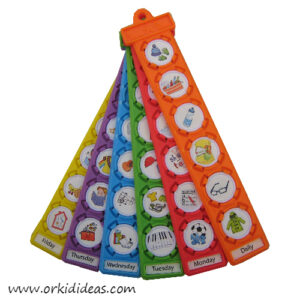
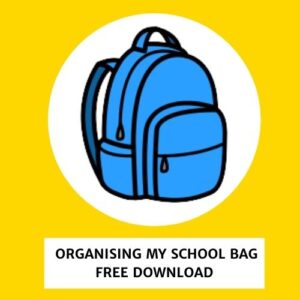



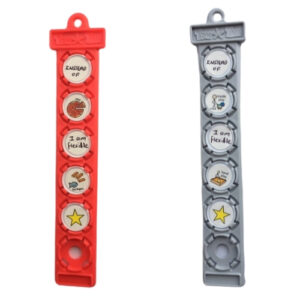
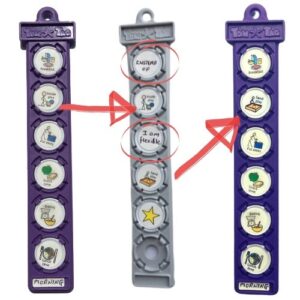

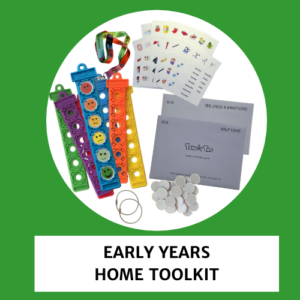

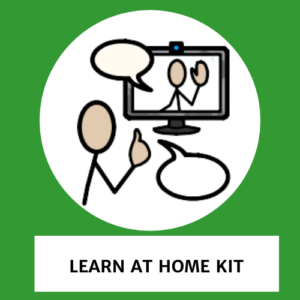
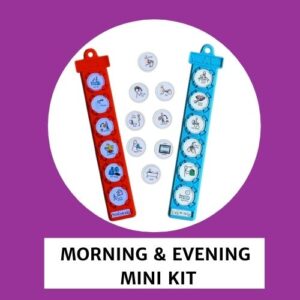
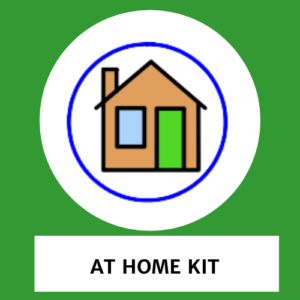
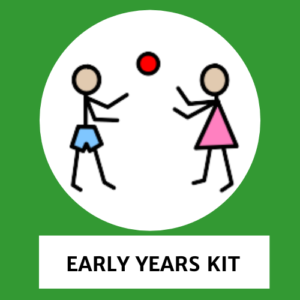


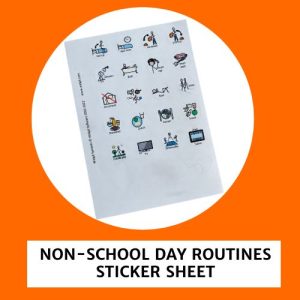
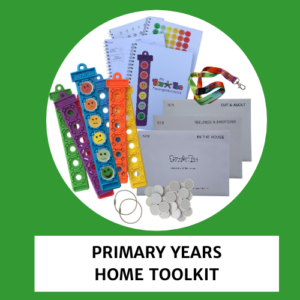
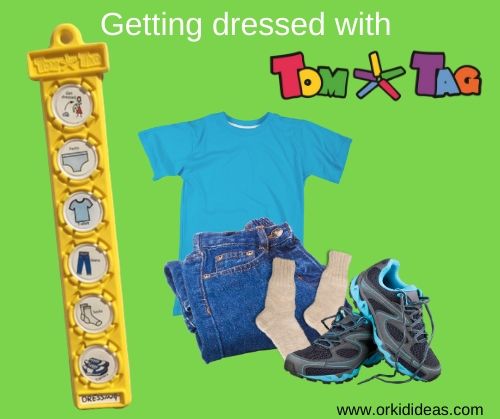
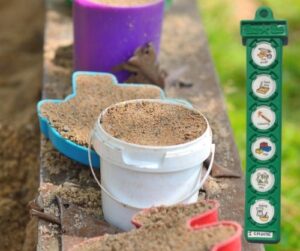





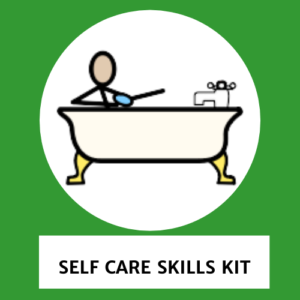



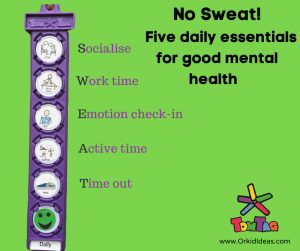
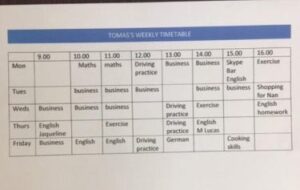




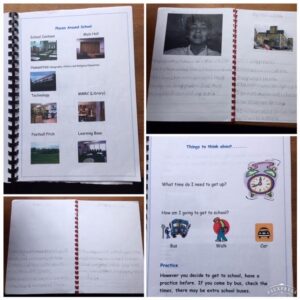

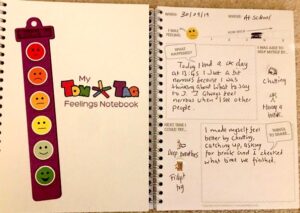
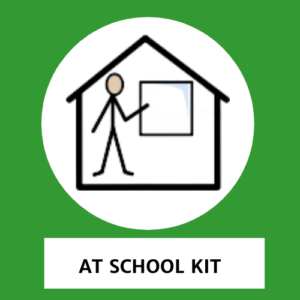
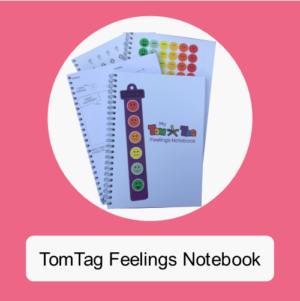

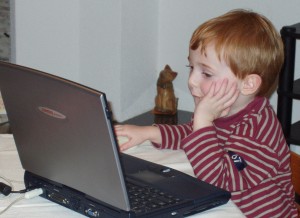
 Play the ‘What if’ game
Play the ‘What if’ game Hold a scavenger hunt
Hold a scavenger hunt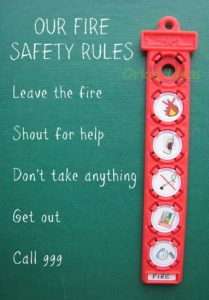 escape faster if you need to. Anyone can ask for a free
escape faster if you need to. Anyone can ask for a free 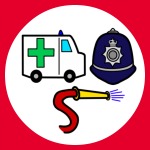 Make sure everyone knows the number for emergency services and try role-playing a call so that they know what they might be asked.
Make sure everyone knows the number for emergency services and try role-playing a call so that they know what they might be asked.
